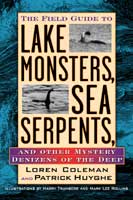The Christian Science Monitor has published the Stephen Kurczy interview with me about the news of the release of the 1938 Loch Ness Monster letter.
The early promotional tagline of this on the CSM website reads: “Newly published documents reveal that a Scottish police official in the 1930s believed ‘beyond doubt’ that the Loch Ness monster existed. Expert Loren Coleman says it reveals the government’s long-standing policy to protect the mythic breast.”
There I am discussing the “mythic breast” again. OMG. LOL.
Update: The CSM site has since corrected/edited it to “mythic beast.”

Selections from the article follow (with my correction, regarding the interviewing of the witnesses):
“The Scottish government has long been interested in protecting Nessie,” says Loren Coleman, who is co-author of The Field Guide to Lake Monsters, Sea Serpents, and Other Mystery Denizens of the Deep. “This just reinforces this whole notion (that) the officials in Scotland take this creature very seriously.”
+ + +

Dan Scott Taylor
…as recently as 1999, Scottish authorities took steps to ensure the safety of their tourist-attracting monster, Mr. Coleman told the Monitor in a telephone interview from Portland, Maine, where he runs the International Cryptozoology Museum.
In 1999, Coleman was set to go on a Nessie-search expedition in a homemade submarine with Dan Scott Taylor. Thirty years earlier, while diving deep in Loch Ness in a one-man submarine, Mr. Taylor had said he undoubtedly bumped into the monster. Now, he wanted to bring with him both a secondary observer – Coleman – and a harpoon so he could take a DNA sample of the beast.
When Scottish authorities caught wind of Taylor’s plan, they revoked his exploration permits and the submarine trip never materialized. Taylor died in 2005.
“There’s always been the sense that quietly…they were taking the reports more validly. There was a serious acknowledgment that the Loch Ness monster exists,” says Coleman.
While the submarine trip never happened, Coleman still presided over a two-week surface expedition in 1999. During that period [Coleman interviewed historical and recent eyewitnesses of] 38 reported monster sightings, and of them Coleman says eight appeared valid.
Sightings often describe the monster’s iconic neck sprouting from the lake, but Coleman says experts agree that those sightings are only of an otter’s tail or a water bird’s neck. In his opinion, the Loch Ness monster is something like a whale or a walrus.
+ + +
Coleman says that new animal discoveries show that humans still have a lot to learn about the world. Just three weeks ago, scientists reported that they had discovered a new species of giant lizard in the Philippines. Coleman says that the finding underscored how strange animals – from Bigfoot to Yeti to the Loch Ness monster – may still be lurking beneath our noses.
“There are animals out there that will surprise us in the future,” he says.

Boing Boing now has a posting about this, too.
Follow CryptoZooNews
Not Found
The resource could not be found.